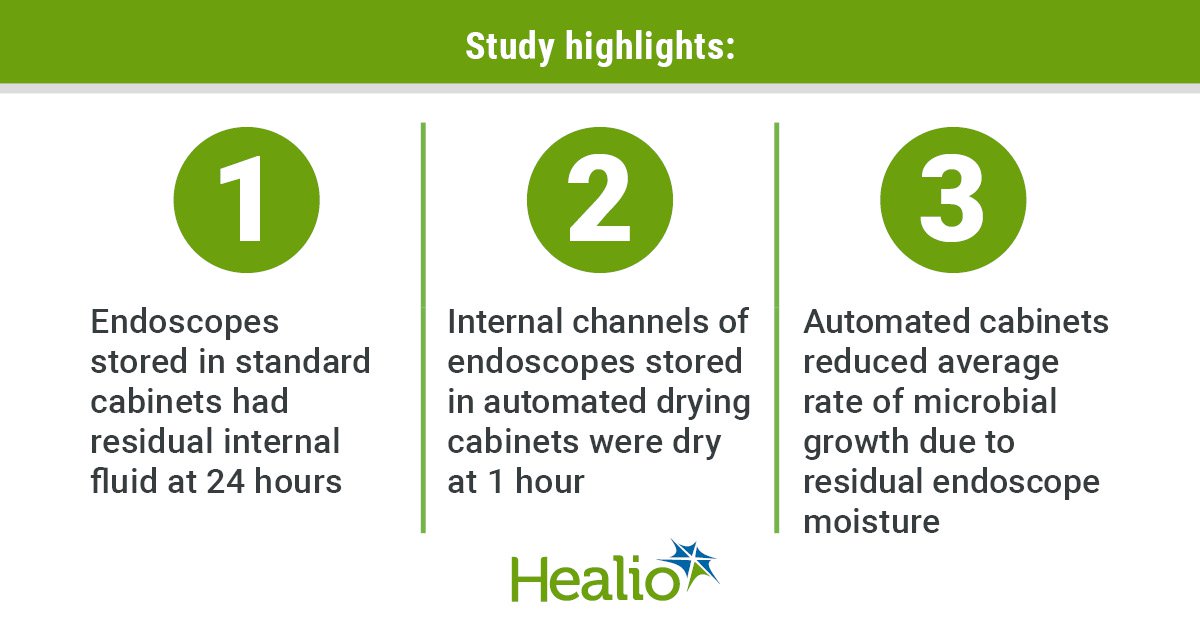Automated endoscope drying cabinets reduce bacterial growth

Storing endoscopes in a cabinet with an automated drying system reduced the time needed to dry the external surfaces and internal channels of the scopes while reducing bacterial growth, according to a study published in the American Journal of Infection Control.
V. Raman Muthusamy, MD, from the University of California, Los Angeles, told Healio Gastroenterology and Liver Disease that these automated drying cabinets (ENDODRY Cabinet, Medivators) were developed to address residual moisture present on endoscopes after reprocessing, which could potentially allow environmental contamination to take hold on the scopes.
“With these ventilated cabinets, the idea is that you hook the scopes up after reprocessing to store them in these cabinets that will allow air flow both within the cabinet and within the endoscope channels to facilitate and maintain drying,” he said. “The question is of course that this theoretically sounds appealing, but how long does it take to get them dry and does it really matter?”
To test drying times, researchers took reprocessed bronchoscopes, colonoscopes and duodenoscopes and stored them in either an automated drying cabinet or a standard cabinet. They assessed dryness at 30 minutes, 1 hour, 2 hours, 3 hours and 24 hours using cobalt chloride paper.

After 24 hours in the standard cabinet, external surfaces were dry, but the internal channels still contained residual moisture. In the automated drying cabinets, external surfaces were dry at 3 hours and internal channels of the scopes were dry at 1 hour.
“Which makes sense,” Muthusamy said. “They’re hooked up, and air is getting blown directly through.”
To assess bacterial growth, researchers inoculated scopes after reprocessing with Pseudomonas aeruginosa and compared rates of microbial growth at 0, 3, 12, 24 and 48 hours.
In the standard cabinet, investigators found an average rate of colony forming unit growth of 8.1 × 106 per hour for bronchoscopes, 8.3 × 106 per hour for colonoscopes, and 7 × 107 per hour for duodenoscopes. In the automated drying cabinet, average colony forming unit growth rate was –28.4 per hour (P=.02), –38.5 per hour (P=.01), and –200.2 per hour (P=.02) in each type of scope, respectively.
“There was a pretty profound reduction in the bacterial growth rate when you used automated drying,” Muthusamy said. “The moisture definitely helps with bacterial growth. There will be some growth, but it’s quite low even at a period of several days compared to what you would see with no drying.” – by Alex Young
Disclosure: Muthusamy reports consulting for Medivators. Please see the full study for all other authors’ relevant financial disclosures.
